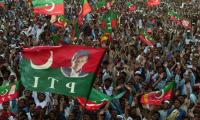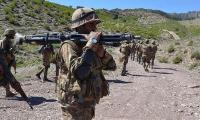What exactly is CPEC? Is it a road? A pipeline? A plan to develop Gwadar as seaport? An effort to increase energy supply to Pakistan? A way to boost the industrial and agricultural development? It is a bit of all of these and some more. Yet, one cannot think of CPEC as a linear road or neatly compartmentalized source of above-mentioned objectives. It is working, evolving, and also fluid to some degree. To further shed light on CPEC, this article refers to some literature (mainly Rafiq 2017; and also Long-term Plan for China-Pakistan Economic Corridor (2017-2030) GoP; Rakisits 2015) to illustrate the discussion.
CPEC has a major energy development component as well as some infrastructure building embedded into it, amongst other above-listed components. In terms of infrastructure, it aims to modernize, build, and increase connectivity in many places in Pakistan to develop an ‘integrated transport system’; including the western route of linking Gwadar to western China’s landlocked region of Xinjiang. However, the major component of CPEC so far has been to increase the energy supply in Pakistan as energy shortages were crippling Pakistan’s economy.
According to one estimate, Pakistan loses approximately six percent of its GDP due to energy shortages and poor infrastructure. So, CPEC is a means to inject Pakistani’s economy and society with much-needed stimulus to boost investment in its critical sectors.
In terms of timelines, CPEC was conceived in mid-2013, operationalized in the spring of 2015 and had some high-priority ‘early harvest’ projects to be completed by 2018; short-term projects to be considered till 2020; medium-term till 2025; and long-term till 2030. According to a GoP document, the priorities are “Gwadar port, energy, transport infrastructure, and industrial cooperation”.
Apprehensions have been expressed that CPEC is another East India Company making inroads for Chinese neo-colonialism in Pakistan; or at least getting Pakistan ‘deeper into Beijing’s geostrategic orbit’. The oil pipeline once built — linking Gwadar to western China — will be significant for China as it will provide, according to one source, a 6,000 miles shorter transport route for China to get oil. It will also play a key role in its Belt and Road Initiative, increasing connectivity by being a ‘critical land bridge in the development of China’s Silk Road’. It is also a way for China to utilize the ‘over-supply’ and ‘over-capacity’ of its state-owned enterprises to direct them towards CPEC.
CPEC will also help Pakistan. The country’s potential to produce more value-added goods in manufacturing and agriculture has been held back by many factors including energy shortages and ‘poor policymaking’. It has led to consistent decline of exports as a percentage of GDP in the recent past. Pakistan’s largest manufacturing sector textiles could benefit from CPEC-oriented investment. Two Chinese companies have made investments in Masood Textiles Mill in Faisalabad in 2015. This scant investment also points to the divergent business ways of textiles manufacturers in Pakistan and China, with the latter assumed to be more disciplined.
Other than labour, the cost of doing business due to high utility prices might be not be an incentive for the Chinese, who are facilitated more in their own country in terms of availability of relatively cheaper provisions. The government of Pakistan’s attempts to establish industrial zones in various parts of Pakistan have not been entirely successful in the past because the government could not provide the necessary utilities and housing/convenient transportation for labour in these zones. However, wages in Pakistan are lower than those offered in China, and they might offset the impact of the subsidies that Chinese receive in their country.
The press leaked in the past that investments in agriculture are also part of CPEC. China imports food and its investment in agriculture in Pakistan through land buying or leasing could help it secure its food supplies as it has done in other parts of the world. Chinese equipment, expertise, and technology could also help modernize agriculture in Pakistan and also spurt a food processing agro-based industry. For example, if drip irrigation is comprehensively operationalized in agriculture in Pakistan with Chinese help, it could help a great deal with long-term water usage and shortages. Transforming Pakistan’s agriculture away from water-intensive crops could be useful as well.
There are both political and economic barriers that can hamper progress on CPEC fully materializing in the long term. In terms of political barriers, the smaller provinces in Pakistan feel that the largest and most resourceful Punjab province has been prioritized in CPEC projects.
In Balochistan there is divergence of opinions on CPEC. While Baloch nationalists might be supporting the investment CPEC will bring, pro-insurgency groups are opposed to it. With the development of Gwadar as a port, there are apprehensions that non-Baloch in-migration will change the demography in Gwadar in particular and in Balochistan in general.
Therefore, every effort should be made to hire Baloch labour in CPEC projects as well as to build schools, hospitals, and vocational training institutes in Balochistan, so that human development and skills enhancement can take place in the province. That would further enable the local population to become part of the economy that develops as a result of CPEC.
We end the article with Rafiq (2017)’s words, “The ultimate benchmarks for the success of CPEC will be whether it boosts industrial productivity, exports, and job creation in Pakistan, putting the country on a path toward sustained, high levels of equitable economic growth”.
All development is political, so is CPEC; it should be fairly administered by keeping in mind the interests of all stakeholders; and not just the largest province, or those more powerful.
The writer is an Islamabad-based social scientist.
Economic nationalism remains potent political narrative, influencing both Republican and Democratic platforms
Yes, blockchain, decentralised and distributed ledger technology, is foundational backbone of cryptocurrencies
Blue carbon covers merely 2% of ocean surface but absorbs 50% of carbon dioxide
During WWII, Japan’s economy and national morale were plummeted by its doomed alliance with Germany
One can imagine how confusion will affect psyche of not just observers but also of participants of various ongoing...
After November 30, it will be impossible for ordinary internet users to access all banned websites, including X







